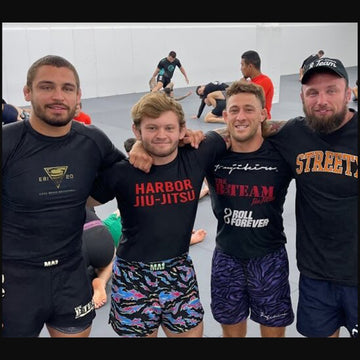There was a time in Jiu-Jitsu when leg locks were considered second-rate. If you grabbed a foot or heel, it was seen as dirty or cheap. Some gyms barely taught them. In competition, heel hooks were outright banned under IBJJF rules, both in gi and no gi until very recently. Today, leg locks are some of the most technical and important tools in grappling, and they’ve been battle-tested at the highest levels.
Back in 2005, Marcelo Garcia was booed at ADCC for going after a leg. Yes, Marcelo, the guy everyone looks up to. That moment says a lot about how misunderstood leg locks were at the time. Masters of the leg locks like Dean Lister started teaching a utilizing them at the highest levels of coemption in Jiu Jitu. But the narrative started to shift when fighters like Rousimar Palhares began finishing opponents in the UFC with explosive leg attacks. He also earned a reputation for holding submissions too long, which brought controversy and a lot of caution around leg locks. Even one of the greatest fighters in modern MMA Anderson Silva, lost to a devastating flying scissor heel hook at towards the end of a fight that he was slated to win by Ryo Chonan, at PRIDE 26.
Then came Ryan Hall. Calm, composed, and completely methodical, Hall made a name for himself in the UFC using calculated entries and clean leg finishes. His style showed that leg locks could be precise and safe when applied properly, and they worked even when strikes were involved.
But the biggest shift in modern Jiu-Jitsu came from the Danaher Death Squad. Athletes like Gordon Ryan, Garry Tonon, Eddie Cummings, and Nicky Ryan completely changed the leg lock landscape with their systematic, controlled approach. They weren’t diving for feet blindly. They built positional systems around leg entanglements like the saddle and inside sankaku. They dominated elite competitions by controlling the pace, forcing reactions, and finishing with inside heel hooks from angles most people weren’t ready for.
In that same era, two Australian grapplers made their mark by proving just how effective leg locks could be at the highest level. Lachlan Giles made headlines at ADCC 2019 when he entered the absolute division and heel hooked Kaynan Duarte, Mahamed Aly, and Patrick Gaudio, all significantly larger opponents. He secured a third-place finish in a stacked bracket and cemented his place as one of the best leg lock tacticians in the game.
What made Lachlan's run even more impressive was that he was already well-known as a coach. Through Absolute MMA in Australia and his instructional content online, he helped shape the leg lock knowledge of athletes around the world, including Craig Jones, who became one of the most dangerous leg lockers in competitive Jiu-Jitsu. Craig followed a similar trajectory, making deep runs at ADCC and becoming a fixture in submission grappling through his ability to threaten legs from virtually any position.
Lachlan's impact as a coach is just as impressive as his competitive record. His focus on problem solving, structured training, and clear context for when and why a technique works has elevated the level of instruction worldwide. His students aren’t just learning moves, they’re building complete systems with intent, and that includes leg locks.
Thanks to these athletes and coaches, the stigma around leg locks has almost completely disappeared. Today, any serious no gi competitor must understand leg entanglements. They’re no longer shortcuts or gimmicks, they’re highly technical, positionally sound, and often the smartest path to victory.
Leg locks used to be the dark arts of Jiu-Jitsu. Now, they’re essential knowledge.





